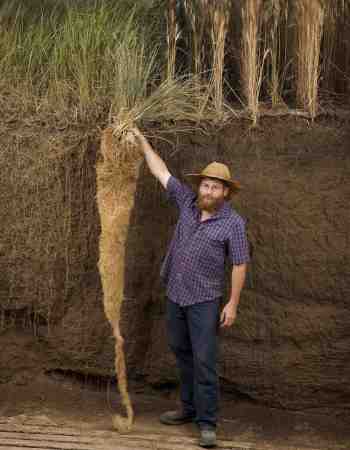How Open is Open Access

Open Access (OA) has always been thought about as a way to throw open the doors of reading and publishing academic work. To encourage anyone and everyone to read expert peer reviewed knowledge from a wide range of subject areas, and that academics, scientists and researchers from all disciplines can publish work in the knowledge that it would be less likely to end up on a dusty shelf somewhere, never read or even known about. Overall people generally tend to still believe this, but recently I've had cause to question what has become of the Open Access model.
Quick background I had hoped to submit some new work in a well known journal 'brand' special collection, and worked diligently toward the deadline, giving up some of my summer holiday time to achieve a good piece of work, orientating it towards the special collection remit. I got ready to submit and re-read the website information to prepare the manuscript formatting, citation requirements and so forth. Only when I clicked on the submit button, taking me to yet another checklist of bullet points did I see that the journal was exclusively OA and on acceptance I would need to agree to pay the appropriate Article Processing Charges (APC) fees, in this case, £1000.00. Ok yes, I should have checked before, but I didn't know to check for an exclusive OA model. There had always been an option of closed or open - but now this is increasingly not the case. And that's a problem.
Article Processing Charges
As a low paid and casualised academic affiliated to a university that had no policy or funding allocated for any APC, the OA APC charges were out of reach. Though I could pay, it felt wrong that even when I earned so little from academic work, I still had to pay 'a full amount' to get my work out there. Article Processing Charges are often paid by the institution that a researcher may be affiliated to, and if it's assumed that the institution is a well funded university, this might well be what happens. Institution funding can be via a pool of research money allocated for APC per faculty or project, or an individual making a case to their central research office to get financial help. In reality a lot of institutions have no such funding allocation in any scenario, and researchers are left to make their own decisions about paying up themselves. This essentially means that many 'OA only' journals are immediately out of bounds for researchers and they simply give up on ideas about OA and retreat to the old traditional closed journal model. The growing trend that journals are becoming exclusively OA, and the increasing prevalence of 'Gold' OA, means that the journal industry have now basically repossessed Open Access to become another proprietary model of extractive publishing. Gold OA introduces the idea that 'standard' OA isn't really very open at all, only Gold OA is. Gold OA has higher APC fees.
Publicly funded universities often subsidise their researchers work in one way or another - that means our taxes being used to pay for research, which is fine, good. When a journal asks for that university to then pay subscription fees to access that journal output, they are often asking a university to pay twice for the same piece of work, with public money - ie, pay for research to be carried out and written, and then pay again for the privilege of reading it (or sharing it). The journal is making huge profit from public funds. That's our taxes, twice. It may be somewhat more permissible to expect privately funded universities to pay more than publicly funded - or some relative arrangement. But as yet, that's not how it works, and it's a mute point.
Why is OA important?
In today's world of hard to believe or even find facts and reliable knowledge, OA publications and knowledge websites are essential for the general public to be able to access. Without going into huge detail on this (it's an article in itself), the public may need easy and straightforward ways to refer to papers, articles or reports at a glance, for example to use in social media. A quick example of this would be a post on an oceanside public park Facebook group concerning how 'prairie' grass holds sandy beaches together to help prevent erosion. The OP had used an image showing how long the roots are of these grasses, and someone asked what the image source was so they could use it in their school teaching. Several people shared the source, from a Wiley Online Libraries webpage. This post got 62k reactions, 15k shares and 1.2k comments. This is fluid science communication - people were interested, and wanted solid knowledge. That's just one example of why OA is so important.

Image Caption: The roots of the perennial grain crop Kernza (left) are much deeper than those of annual winter wheat (right), improving soil structure, decreasing erosion, and reducing the need for inputs, which in turn, helps curb pollution from leaching and reduces reliance on fossil fuel-burning farm equipment. Photo by Jim Richardson and courtesy of Patagonia Provisions.
OA has become a political issue
This highly extractive OA publishing model is now being applied aggressively to Open Access, by charging high APC to be included in many journals or to not get published in them at all. This essentially means that OA is increasingly the playground of well funded universities, while publicly funded, cash strapped institutions, who don't pay APC, are closed out. This means many salaried academics, and low paid casualised academics are all actively prevented from being part of the OA network.
So what is the answer?
As usual, there is no immediate solution. It's a thorny wicked and tangled problem filled with stakeholders with vested interests. But while all these invested people argue and discuss and delay finding any real solution, the market itself decides. There is growing open debate these days amongst academics and other relevant parties about the huge usefulness of the pirate web to solve the issue. This was most recently openly advocated by the Electronic Frontier Foundation who awarded the astonishing resourcefulness and brilliance of Sci-Hub founder Alexandra Elbakyan for her work:
We are proud to present awards to this year's winners: ALEXANDRA ASANOVNA ELBAKYAN EFF Award for Access to Scientific Knowledge
Amongst many articles appearing on the award, Gizmodo reported:
"... providing scientific knowledge free to the world through the notorious shadow library Sci-Hub. The pirate cove has been banned in some countries, but the site has survived a mountain of lawsuits and corporate take-down attempts and now claims it houses more than 88.3 million research articles and books on a range of topics..." (Gizmodo, 2023)
“Through Sci-Hub, Elbakyan has strived to shatter academic publishing’s monopoly-like mechanisms in which publishers charge high prices even though authors of articles in academic journals receive no payment,” the EFF wrote in its announcement." (EFF, quoted in Gizmodo)

Image Caption: Alexandra Elbakyan, of SciHub
Final remarks Academia is a big money spinner. Any and every aspect of professional life has been monetised to a ludicrous level - just think about the institutional costs of ICT infrastructure as a starter. And, these days these kinds of preclusive costs being shovelled towards academics are no different for attending or presenting at conferences. So what is the answer?
Further info - OA and vanity publishing
In general, because open access peer review process is identical to the traditional publishing model, it shouldn't be considered as vanity publishing (VP), though in less scrupulous journals it may well be that is what is happening. To my mind, VP is someone throwing their book or CD album onto Amazon or Bandcamp with no critical review process at all. VP of itself isn't necessarily bad in those situations, but it would be bad if the model was applied to academic work because academic work is not fiction, or freehand creativity. Even in free-to-publish OA, the peer review model is rigorous - perhaps overly so, to ensure that free OA is not vanity publishing by another name. These may often be small homespun publications, ran by a close network of friends and colleagues who - though they don't say it - exist to publish their own work. They may not proceed on the same principles of reasonable timeframe for feedback or paper turnaround to publish, or may have other non stated criteria (such as geographical location) to keep their circle close. This seems up to them, a bit like institutional publications released periodically that contain staff work and shared practice. That's fine, but could be stated more clearly on free OA journal websites.
Links
- Example of how universities advise their communities: University of Nevada Las Vegas University Libraries pages on Open Access and APC
- Open Access and Fair Use, advice from Syracuse University
- Definition of Open Access from Creative Commons, which does not fit with the Gold/Standard differentiations seen in many journals
- Barr, K. (2023, July 29). Salute the Black Flag: Sci-Hub Pirate Captain Receives EFF Award for Sticking It to the Man https://gizmodo.com/sci-hub-pirate-elbakyan-receives-eff-award-1850686878
- EFF awards page https://www.eff.org/awards/effawards/2023
Image credit: Photo by нυвιѕ тανєяη on Unsplash